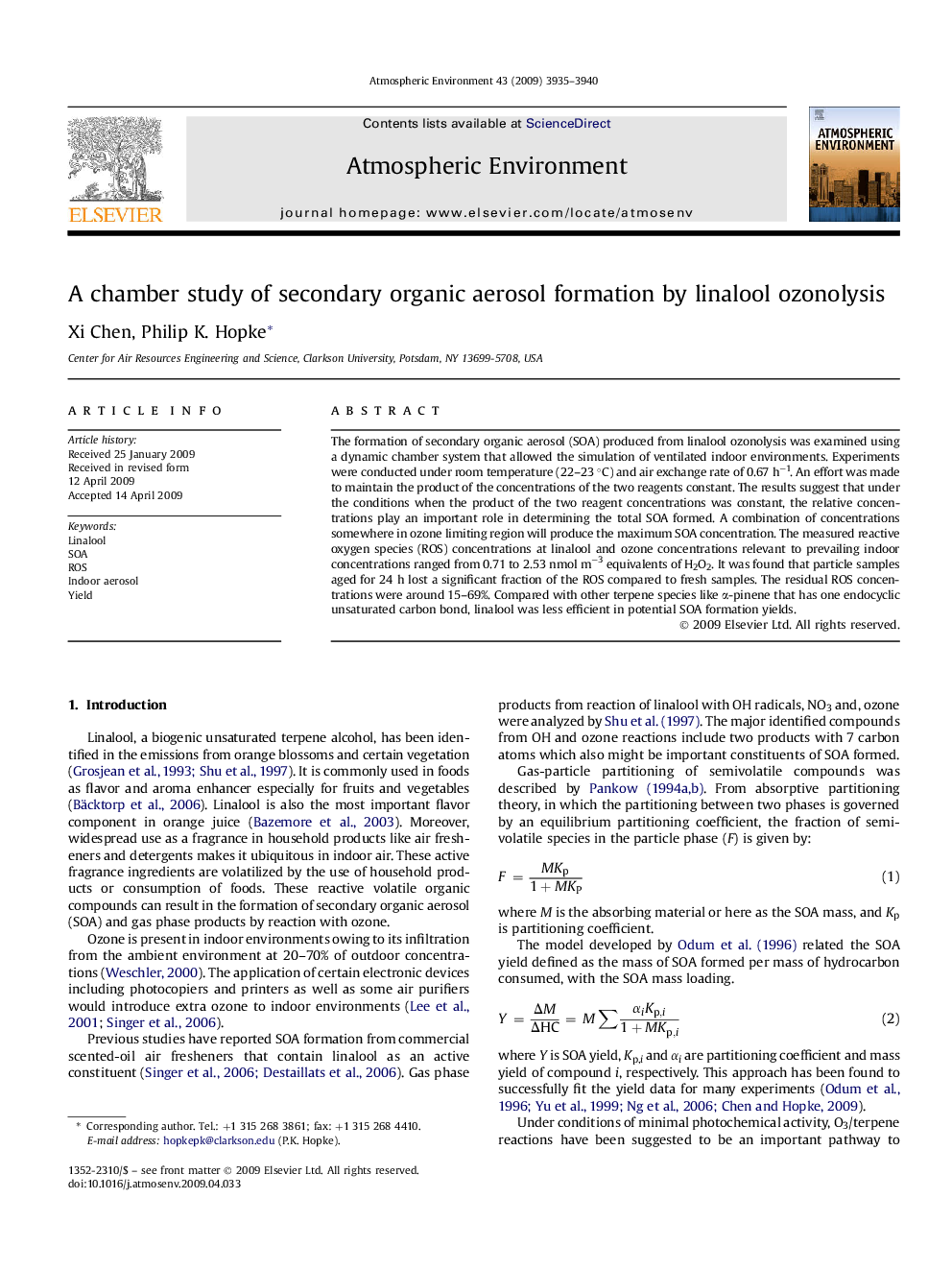| Article ID | Journal | Published Year | Pages | File Type |
|---|---|---|---|---|
| 4441482 | Atmospheric Environment | 2009 | 6 Pages |
The formation of secondary organic aerosol (SOA) produced from linalool ozonolysis was examined using a dynamic chamber system that allowed the simulation of ventilated indoor environments. Experiments were conducted under room temperature (22–23 °C) and air exchange rate of 0.67 h−1. An effort was made to maintain the product of the concentrations of the two reagents constant. The results suggest that under the conditions when the product of the two reagent concentrations was constant, the relative concentrations play an important role in determining the total SOA formed. A combination of concentrations somewhere in ozone limiting region will produce the maximum SOA concentration. The measured reactive oxygen species (ROS) concentrations at linalool and ozone concentrations relevant to prevailing indoor concentrations ranged from 0.71 to 2.53 nmol m−3 equivalents of H2O2. It was found that particle samples aged for 24 h lost a significant fraction of the ROS compared to fresh samples. The residual ROS concentrations were around 15–69%. Compared with other terpene species like α-pinene that has one endocyclic unsaturated carbon bond, linalool was less efficient in potential SOA formation yields.
